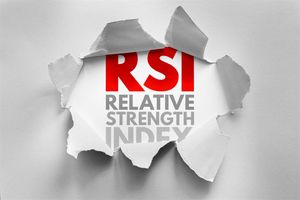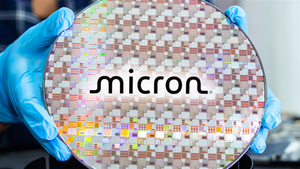
October 16, 2025 – In a financial landscape increasingly defined by volatility and apprehension, gold and silver have surged to unprecedented all-time record highs, signaling a profound shift in investor sentiment. As of October 2025, spot gold has breached the formidable $4,300 per ounce mark, with Comex gold futures touching an astonishing $4,289.90. Not to be outdone, silver has demonstrated an even more dramatic ascent, eclipsing its 1980 and 2011 peaks to reach over $54 per ounce, with some reports indicating prices as high as $54.42. This historic rally is a direct consequence of escalating global uncertainties, including deep-seated US credit fears, persistent inflation, and a mosaic of geopolitical tensions that are compelling investors to seek refuge in time-honored safe-haven assets.
The immediate implications of these record-breaking prices are far-reaching, signaling an accelerated "risk-off" sentiment across global markets. Investors are actively re-evaluating portfolios, bolstering allocations to precious metals, and increasingly questioning the long-term stability of traditional financial instruments and fiat currencies. This monumental rally is not merely a fleeting market phenomenon but reflects a growing distrust in the existing financial architecture, particularly amidst concerns over the U.S. banking sector's health, rising national debt, and the consistent erosion of purchasing power.
The Unfolding Narrative: A Confluence of Crises Drives Precious Metals Skyward
The dramatic ascent of gold and silver to record highs in October 2025 is the culmination of several potent global stressors. Gold's journey above $4,300 an ounce, and silver's leap past $54, are symptomatic of a market grappling with a complex web of economic and geopolitical anxieties.
Specifically, the rally has been fueled by:
- US Credit Fears and Economic Concerns: Persistent anxieties surrounding the U.S. economy, exacerbated by recent issues within the U.S. regional banking sector reporting significant bad loan write-offs, have reignited fears about the broader financial system's health. The Moody's downgrade of the U.S. to Aa1 in May 2025 further solidified safe-haven demand, leading to a pronounced flight from traditional U.S. dollar-denominated assets.
- Geopolitical Tensions: A volatile international arena, marked by ongoing military conflicts in Eastern Europe and parts of Asia, coupled with escalating trade disputes, particularly between the U.S. and China, has fostered widespread investor nervousness. This instability drives capital towards assets perceived as immune to political and economic upheaval.
- Dovish U.S. Federal Reserve Monetary Policy: Expectations of aggressive interest rate cuts by the U.S. Federal Reserve are a primary catalyst. Lower interest rates diminish the opportunity cost of holding non-yielding assets like gold and silver, making them significantly more attractive, especially as real yields trend lower.
- Persistent Inflation and Currency Debasement: Despite some moderation, concerns about sustained inflation and the long-term erosion of fiat currency purchasing power continue to drive investors towards precious metals as a hedge. A weakening U.S. dollar, partly due to debt concerns, further enhances the appeal of dollar-denominated gold and silver for international buyers.
- Structural Supply Deficits (Silver): For silver, a critical underlying factor is the persistent supply deficit, with global consumption projected to outstrip mine production for the fifth consecutive year in 2025. This structural imbalance, combined with tight liquidity in major trading hubs like London, has exacerbated silver's price surge, contributing to a historic short squeeze.
Initial market reactions have been characterized by a scramble for physical metals and increased trading volumes in precious metals ETFs. The gold-silver ratio, while still favoring gold, has seen silver gain significant ground, reflecting its dual appeal as both a monetary and industrial metal. Central banks globally have also continued their strong net buying of gold, a trend seen as a strategic redefinition of reserve strategies away from a sole reliance on the U.S. dollar.
Corporate Fortunes: Winners and Losers in the Precious Metals Boom
The unprecedented surge in gold and silver prices is creating a clear divide between winners and losers in the public markets, reshaping the financial outlook for a diverse array of companies.
The Winners: Mining and Royalty Companies Shine
Mining companies focused on gold and silver extraction, alongside precious metals streaming and royalty companies, are the primary beneficiaries. These firms witness substantial increases in revenue, expanded profit margins, and robust cash flows as their operational costs generally lag behind the soaring metal prices. This financial strength translates into potential for increased dividends, share buybacks, and accelerated exploration efforts.
Leading gold miners poised for significant gains include Barrick Gold Corporation (NYSE: GOLD, TSX: ABX), Newmont Corporation (NYSE: NEM), and Agnico Eagle Mines Limited (NYSE: AEM, TSX: AEM), all of whom are leveraging high-quality assets and disciplined cost controls. Kinross Gold Corporation (NYSE: KGC, TSX: K) has already seen a staggering 190.2% year-to-date increase in 2025, outperforming peers. Other key players like Endeavour Mining and Dundee Precious Metals are also benefiting.
In the silver space, Pan American Silver Corp. (NASDAQ: PAAS), the largest silver producer in the Western Hemisphere, is a major winner, especially after its acquisition of MAG Silver in early 2025. First Majestic Silver (NYSE: AG) is considered a "pure play" on silver, while Hecla Mining Company (NYSE: HL) and Fresnillo Plc (LON: FRES) are also seeing substantial boosts. Emerging players like MAG Silver Corp. (NYSE: MAG) and Vizsla Silver (TSX.V: VZLA) are also well-positioned.
Precious metals royalty and streaming companies, which provide upfront capital to miners in exchange for future production at discounted prices, are particularly attractive due to their lower operational risk. Wheaton Precious Metals Corp. (NYSE: WPM, TSX: WPM), Franco-Nevada (NYSE: FNV, TSX: FNV), and Royal Gold (NASDAQ: RGLD) are seeing earnings and revenues surge, with their business models perfectly suited to capitalize on rising metal prices.
The Losers: Industries Facing Soaring Input Costs
Conversely, industries and companies heavily reliant on gold and silver as raw materials face significant cost pressures. This can lead to reduced profit margins, potential price increases for consumers, and a dampening of demand.
- Jewelry Manufacturers and Retailers: The jewelry market, where gold accounts for approximately 70% of global demand, is particularly vulnerable. Companies like Tiffany & Co. (NYSE: TIF) or Signet Jewelers Limited (NYSE: SIG) could see higher input costs impacting profitability and potentially shifting consumer behavior towards more affordable options or the second-hand market.
- Electronics Manufacturers: Gold and silver are critical in electronics for their conductivity and corrosion resistance. Major electronics producers, including giants like Apple Inc. (NASDAQ: AAPL) and Samsung Electronics Co., Ltd. (KRX: 005930), will face escalating production costs for components in smartphones, computers, and other devices.
- Solar Energy Companies: Silver is a key component in photovoltaic (PV) cells. Companies such as First Solar, Inc. (NASDAQ: FSLR) could be forced to absorb higher material costs or pass them on to consumers, impacting the cost-competitiveness of solar energy.
- Electric Vehicle (EV) Manufacturers: EVs utilize silver in wiring, sensors, and battery systems. Higher silver prices could increase manufacturing costs for EV makers like Tesla, Inc. (NASDAQ: TSLA) and General Motors Company (NYSE: GM).
- Medical Equipment Manufacturers: Silver's antibacterial properties and gold's biocompatibility make them vital in medical devices. Companies in this sector may see increased input costs for products ranging from wound dressings to pacemakers.
These industries will need to adapt through innovation, exploring substitutes, or securing long-term supply contracts to mitigate the impact of historically high precious metal prices.
Wider Significance: A Paradigm Shift in Global Finance
The record-shattering performance of gold and silver in October 2025 transcends mere commodity price movements; it signifies a profound paradigm shift in global finance and investor psychology. This event is not an isolated incident but fits squarely within broader industry trends reflecting deep-seated global anxieties and a re-evaluation of fundamental economic principles.
Broader Industry Trends: The rally underscores a pervasive "risk-off" environment, where traditional safe havens are sought amidst a backdrop of:
- Accelerating De-dollarization: Central banks globally are actively diversifying reserves away from the U.S. dollar, with significant gold accumulation, signaling a move towards greater financial autonomy and reduced dependency on a single reserve currency.
- Persistent Inflation and Currency Debasement: The sustained rally points to an enduring concern over the long-term erosion of fiat currency purchasing power, driven by expansive fiscal policies and escalating national debts.
- Growing Geopolitical Fragmentation: Ongoing conflicts, trade wars, and political instability are creating a fragmented global economic order, prompting a flight to tangible assets.
- Silver's Green Energy Role: Beyond its monetary appeal, silver's critical role in the burgeoning green energy sector (solar panels, EVs) has cemented its industrial demand, making it a dual-threat asset.
Ripple Effects and Regulatory Implications: The ripple effects are extensive. Financial markets are witnessing a re-calibration of risk appetite, with analysts advocating for increased precious metals allocation in diversified portfolios. Central banks and governments may face increased pressure to address the underlying economic issues and geopolitical tensions fueling this demand, potentially leading to reassessments of monetary and fiscal policies. For industrial users of silver, rising costs could spur innovation in material science to reduce reliance on the metal or secure long-term supply agreements. Regulatory bodies might also increase scrutiny over commodity markets to prevent speculative excesses and ensure market stability.
Historical Precedents: This current rally echoes historical periods of significant precious metal appreciation, such as the 1970s gold rush following the end of the gold standard, the surge during the 2008 financial crisis, and the 2011 peak amidst the Eurozone crisis. In 2011, gold surpassed $1,900, and silver hit nearly $50. However, the current surge is more multifaceted, driven by a complex interplay of monetary policy, geopolitical uncertainty, and structural changes in demand, rather than being solely a response to inflation or currency debasement. The dramatic gains in silver, doubling in just 18 months, particularly stand out due to its crucial role in the green energy transition—a factor less prominent in earlier rallies.
What Comes Next: Navigating a Bullish but Volatile Future
The future for gold and silver, post-record highs, appears poised for continued bullish momentum, albeit with anticipated volatility. Both short-term and long-term possibilities point towards a structural shift in how investors view and value these precious metals.
Short-Term (Next 6-12 Months): Continued Ascent with Corrections The immediate outlook remains largely bullish. Expectations of further interest rate cuts by the U.S. Federal Reserve (potentially two more in 2025 and 75 basis points in 2026) are set to keep bond yields and the U.S. dollar weak, providing a tailwind for precious metals. Persistent global uncertainties, including geopolitical tensions and U.S. economic concerns, will sustain safe-haven demand. Central bank buying is expected to remain robust, and silver's strong industrial demand from electronics, EVs, and renewable energy will continue to outpace supply.
Analysts forecast gold could test $4,400 - $4,500 by year-end 2025, potentially peaking near $4,600 by mid-2026, with some aggressive predictions reaching $5,000 next year. Silver is expected to consolidate around $50-$55, with projections of $57.50 by mid-2026 and a potential peak at $65. However, the market is considered overbought, suggesting that short-term profit-taking and corrections are likely, which many view as healthy buying opportunities.
Long-Term (Beyond 12 Months): A Structural Bull Market The long-term outlook for both metals points to a sustained structural bull market. The erosion of trust in fiat currencies and traditional safe havens like the U.S. dollar, driven by geopolitical fragmentation and fiscal sustainability concerns, will continue to push institutional and sovereign investors towards tangible assets. Persistent inflation fears will maintain demand for precious metals as an inflation hedge. Silver's indispensable role in the green economy, particularly in solar energy (potentially consuming 85-98% of current global silver reserves by 2050), ensures robust and growing industrial demand, with supply deficits expected to persist for years.
Long-term projections for gold range from $5,000 to $8,900 by 2030. For silver, forecasts are even more aggressive, with some analysts predicting $75 by 2027 and potentially $100 to $240 per ounce in the longer term.
Strategic Pivots and Market Opportunities:
- Investors should consider a staggered investment approach, using price dips as accumulation opportunities, and diversifying portfolios to include physical metals as a hedge against fiscal and monetary instability.
- Mining firms will likely accelerate exploration and development efforts to capitalize on elevated prices.
- Industrial users of silver must innovate to reduce their dependence on the metal, investing in R&D for silver reduction, exploring alternative materials, and enhancing recycling infrastructure. Securing long-term supply contracts will be paramount.
- Governments and Central Banks will continue to reassess monetary policies and strategic reserves, with a likely continuation of the de-dollarization trend.
Challenges include potential price volatility, liquidity squeezes in physical markets, and a possible shift in consumer demand for jewelry. A significant bearish reversal is less likely in the long term, given the fundamental drivers, but short-term corrections remain a possibility if geopolitical tensions ease or monetary policy unexpectedly tightens.
Wrap-Up: A New Era for Precious Metals
The historic surge of gold and silver to all-time record highs in October 2025 marks a pivotal moment in financial history, underscoring a profound shift in global economic and geopolitical dynamics. This rally is not merely a reflection of transient market sentiment but a testament to a deep-seated lack of confidence in traditional financial instruments and a growing preference for tangible, inflation-protected assets.
Key Takeaways:
- Safe-Haven Status Reinforced: Gold and silver have unequivocally reasserted their roles as ultimate safe-haven assets amidst extreme global uncertainty, persistent inflation, and geopolitical turmoil.
- Erosion of Confidence: The rally signals a significant erosion of investor confidence in fiat currencies, government bonds, and potentially equity markets, prompting a widespread re-evaluation of portfolio strategies.
- Dual Drivers: While gold benefits primarily from its monetary safe-haven status, silver's dual role as both a monetary metal and a critical industrial commodity (especially in green technologies) amplifies its appeal and potential for outperformance.
- De-dollarization Trend: Central bank gold accumulation reflects a strategic move away from U.S. dollar dependency, hinting at a more fragmented global financial system.
Market Moving Forward: The market is likely entering a new era for precious metals, characterized by sustained elevated prices and increased volatility. While short-term corrections are probable due to overbought conditions, these are generally seen as healthy and as buying opportunities within a broader structural bull market. The fundamental drivers—geopolitical instability, monetary easing, and industrial demand—are expected to persist, supporting a long-term bullish outlook.
Lasting Impact: The lasting impact will be a fundamental recalibration of investment strategies, with precious metals gaining a more prominent and permanent role in diversified portfolios. This event will also likely accelerate innovation in industries reliant on silver and potentially influence monetary policy decisions by central banks grappling with inflation and reserve diversification.
What Investors Should Watch For: In the coming months, investors should closely monitor:
- Inflation Data: Global CPI and PPI reports will indicate the persistence of inflationary pressures.
- Central Bank Policy: Statements and interest rate decisions from the U.S. Federal Reserve and other major central banks will be crucial.
- Geopolitical Developments: Any escalation or de-escalation of existing conflicts or new geopolitical flashpoints.
- U.S. Dollar Index (DXY): Its strength or weakness will offer clues about its inverse relationship with precious metals.
- Investment Flows: Tracking ETF holdings and institutional reports for signs of continued accumulation or divestment.
- Silver Supply/Demand Dynamics: Any significant changes in mining output or industrial demand, particularly from the green energy sector.
In conclusion, the record-breaking performance of gold and silver in October 2025 is more than just a headline; it is a powerful indicator of profound shifts in the global economic and geopolitical landscape. Investors must remain highly vigilant, closely monitoring macro-economic data and geopolitical developments to adapt their strategies in what promises to be a volatile yet historically significant precious metals market for years to come.
This content is intended for informational purposes only and is not financial advice




